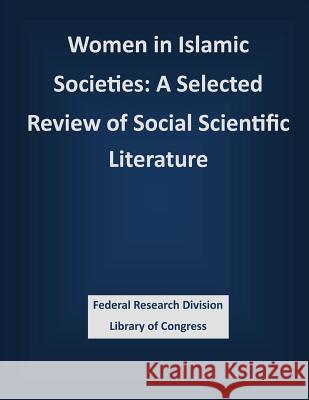Women in Islamic Societies: A Selected Review of Social Scientific Literature » książka
Women in Islamic Societies: A Selected Review of Social Scientific Literature
ISBN-13: 9781503388734 / Angielski / Miękka / 2014 / 124 str.
Half a billion Muslim women inhabit some 45 Muslim-majority countries, and another 30 or more countries have significant Muslim minorities, including, increasingly, countries in the developed West. This study provides a literature review of recent empirical social science scholarship that addresses the actualities of women's lives in Muslim societies across multiple geographic regions. The study seeks simultaneously to orient the reader in the available social scientific literature on the major dimensions of women's lives and to present analyses of empirical findings that emerge from these bodies of literature. Because the scholarly literature on Muslim women has grown voluminous in the past two decades, this study is necessarily selective in its coverage. It highlights major works and representative studies in each of several subject areas and alerts the reader to additional significant research in lengthy footnotes. In order to handle a literature that has grown voluminous in the past two decades, the study includes an "Introduction" and a section on "The Scholarship on Women in Islamic Societies" that offer general observations bird's eye views of the literature as a whole. The Introduction describes the two main sources of the social scientific studies on women in Muslim communities, namely, 1) academic programs on women worldwide that emerged under the impetus of post-1970s women's movements and 2) international and national economic development agencies that came to see women's disadvantaged status as a hindrance to development. It also describes the broad thrust of the social scientific literature on various spheres or dimensions of Muslim women's lives: ideology, law, family, economy, and politics. "The Scholarship on Women in Islamic Societies" section describes features that pervade the entire literature. One feature is that the studies tend to align themselves on a spectrum between two interpretive poles, one relatively negative, the other positive, about the situation of women in Islamic societies. The second feature is that the literature is highly uneven in its coverage, with a disproportionate representation, in particular, of the Middle East and North Africa region. It also discusses the sources of the primary data upon which researchers draw in studies across a variety of fields and describes two types of work that make up the literature on women in Muslim societies, specialized microstudies and projects of consolidation. The final section "Dimensions of Women's Status and Bodies of Research" characterizes the bodies of literature that have developed to illuminate particular dimensions of women's lives. This portion covers, in separate sections, the substantial bodies of social scientific work that have developed on each of the following major dimensions of women's experience and condition: religious ideology, law, demography, family, economics, and politics.
Zawartość książki może nie spełniać oczekiwań – reklamacje nie obejmują treści, która mogła nie być redakcyjnie ani merytorycznie opracowana.











